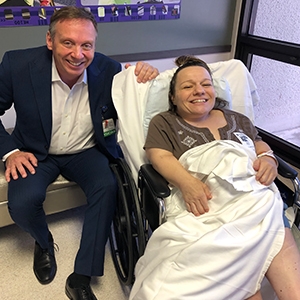Diastrophic dysplasia is a condition that involves the normal creation of cartilage (mutation in SCLC26A2 gene). To date, there is no treatment to treat this mutation in the gene and therefore no matter what the orthopedic management, the presence of arthritis in the joints of the body as the patient ages is inevitable.
The question therefore is how do we manage Diastrophic Dysplasia to minimize impact of the joint arthritis.
First and foremost is maintaining the limbs without significant deformity. This includes the problems seen in the feet, knees and hips. While creating joints that are normal is not possible, it is possible to treat and allow the feet to be flat on the ground, reduce the knee deformity including putting the patella (knee cap) back in place as it is often dislocated and makes the patient quite weak. The hips, while not always possible to reduce in place, can function well if alignment is corrected.
Second, the spine will inevitably develop scoliosis and spinal stenosis. Spinal stenosis in compression of the spinal cord and/or nerves of the spine. Early treatment of this problem will prevent progressive paralysis and weakness. It is crucial that the child and adult do not wait until they are paralyzed or unable to control their urination before seeking treatment. The earlier the better.
Total joint replacements can be utilized later in life to manage joint pain and arthritis (I defer this surgery to my total joint replacement expert colleagues).
Patient Stories
-
Diastrophic Dysplasia
Nicole







